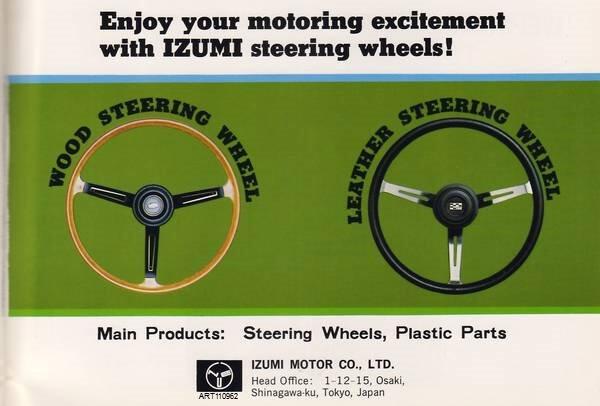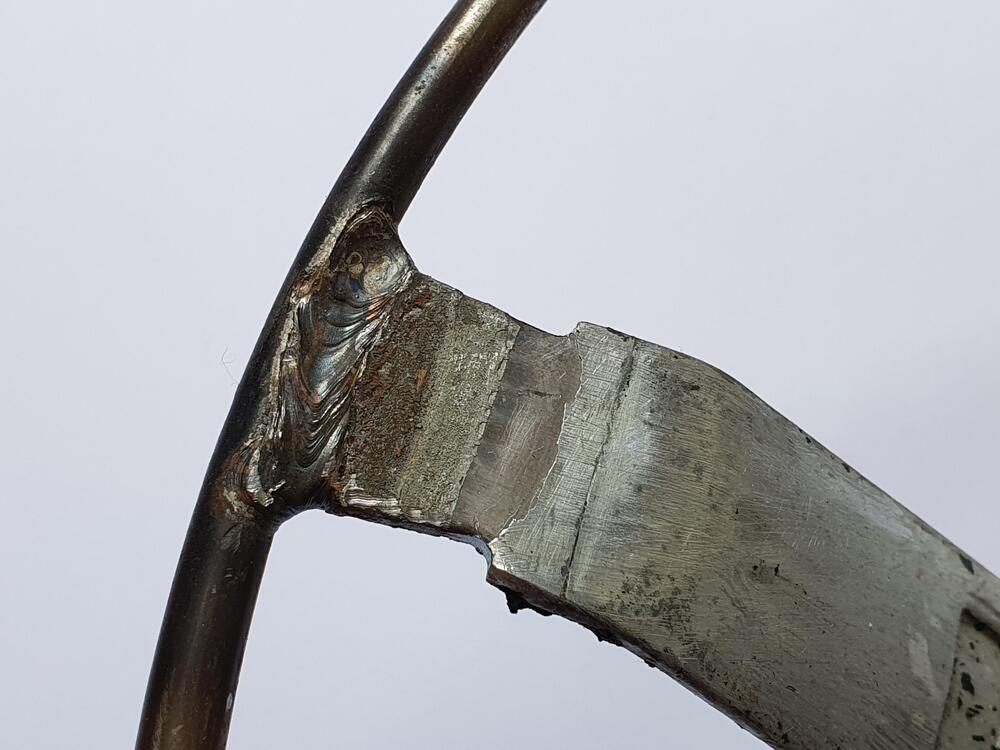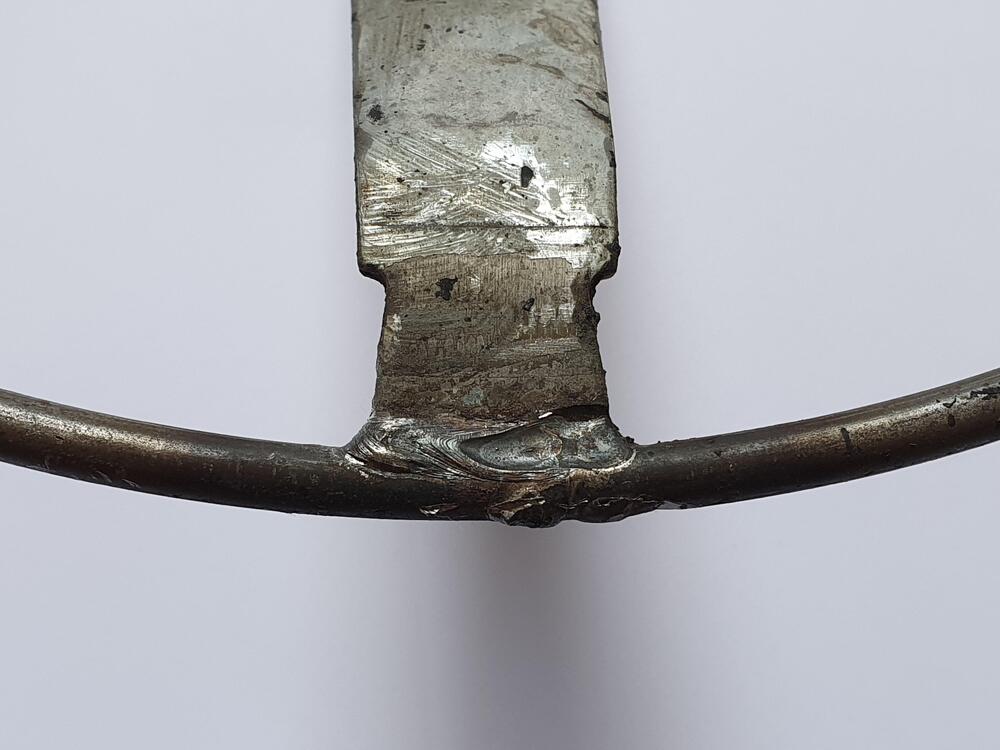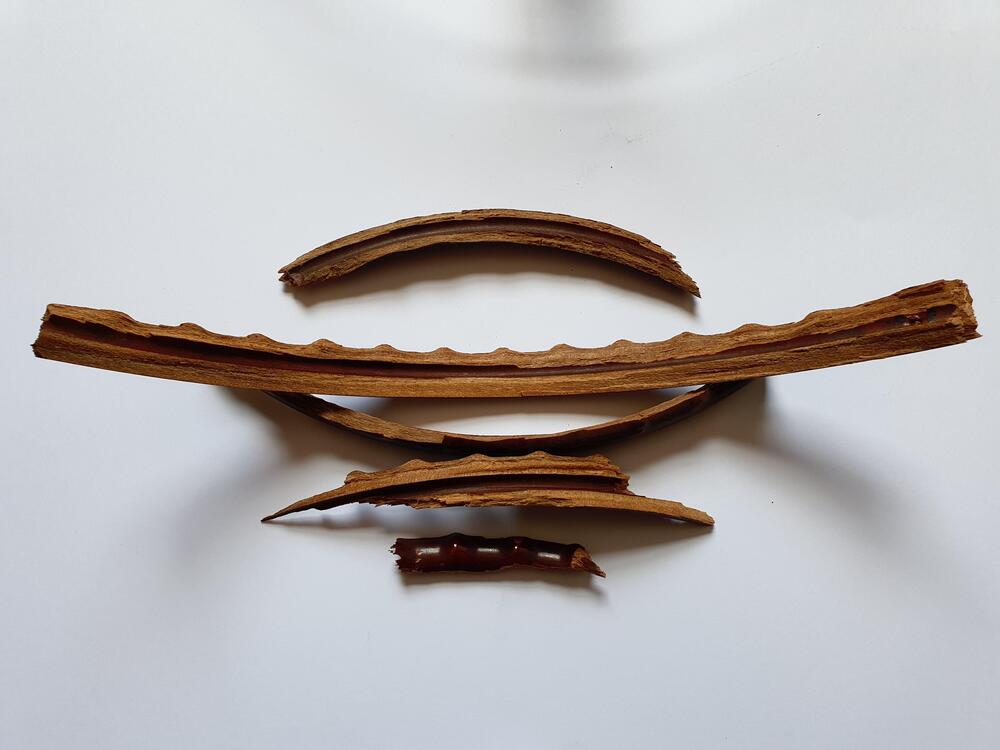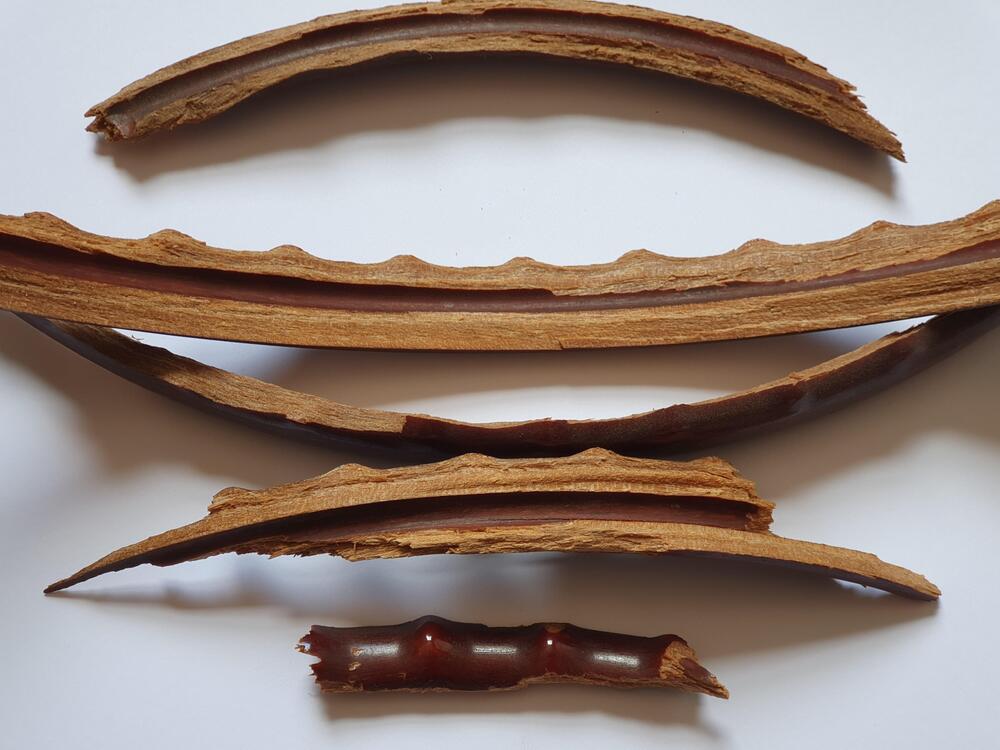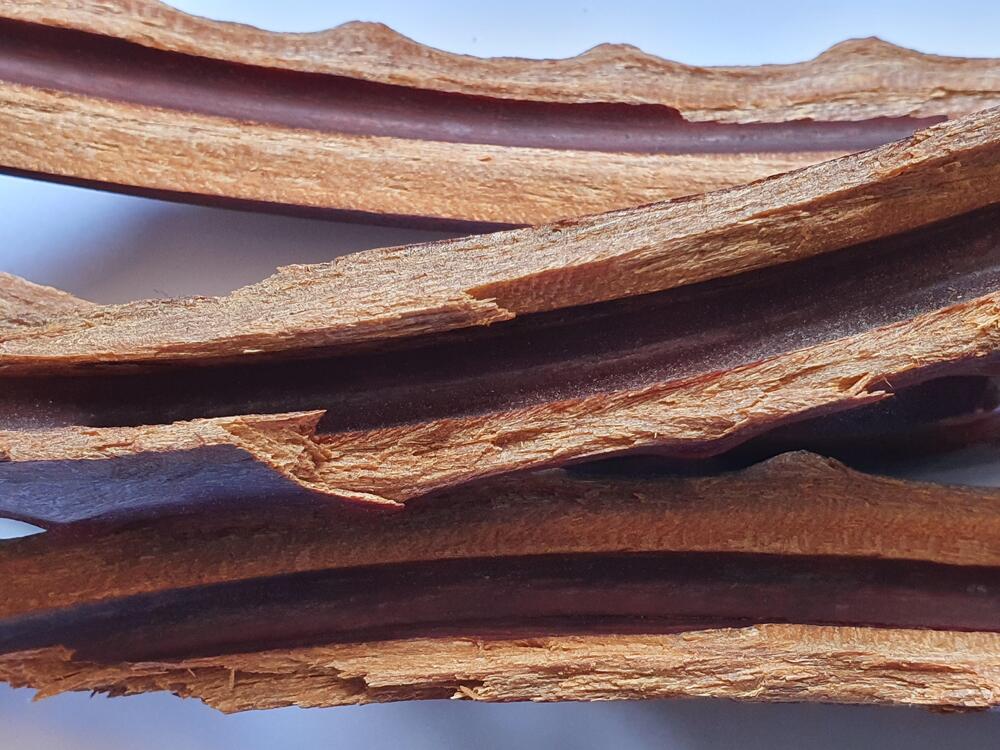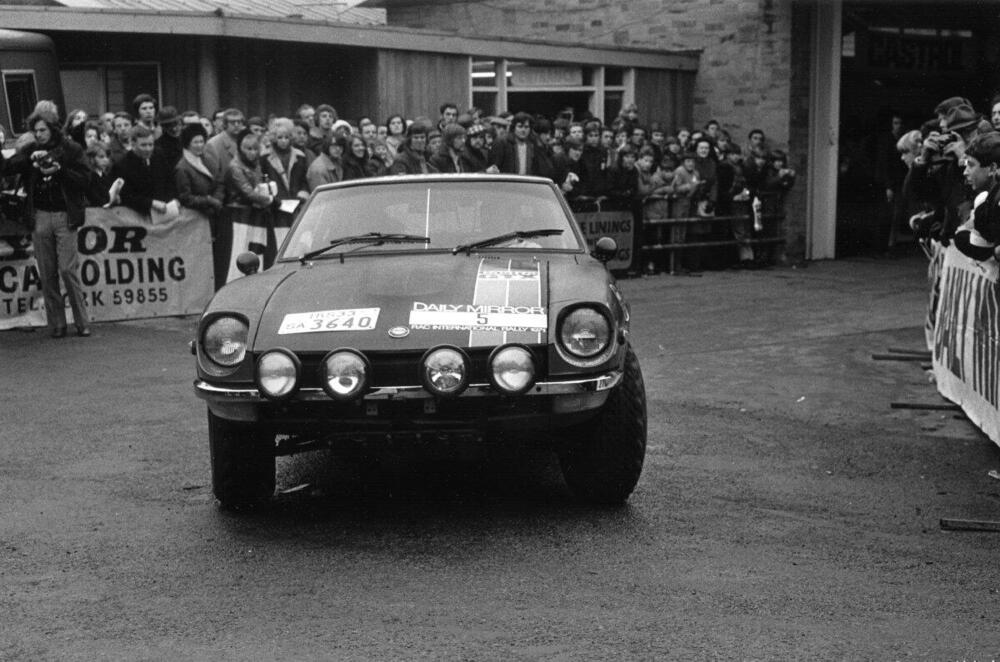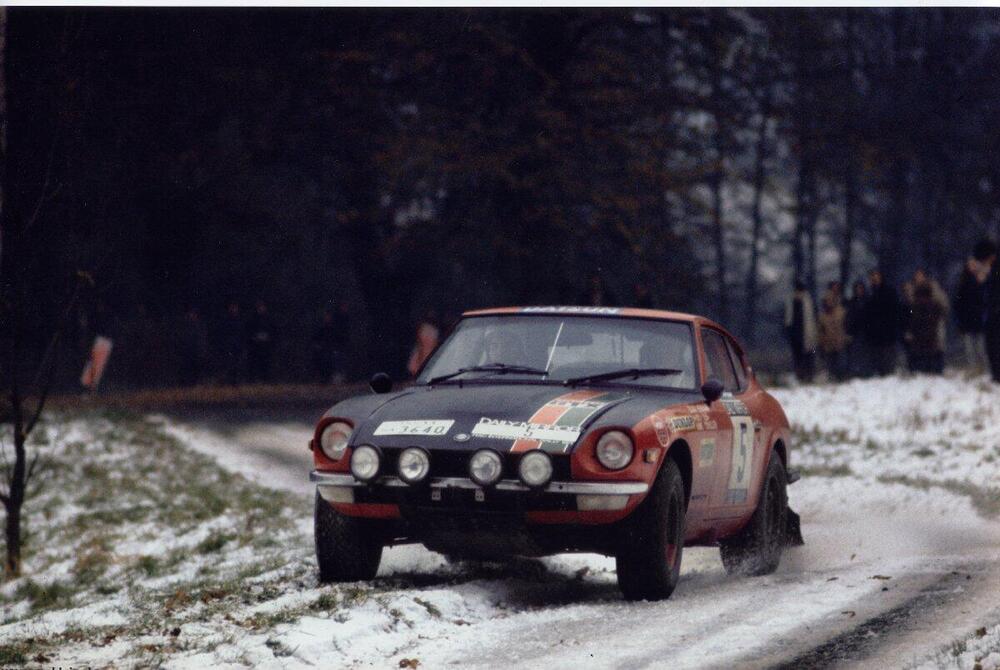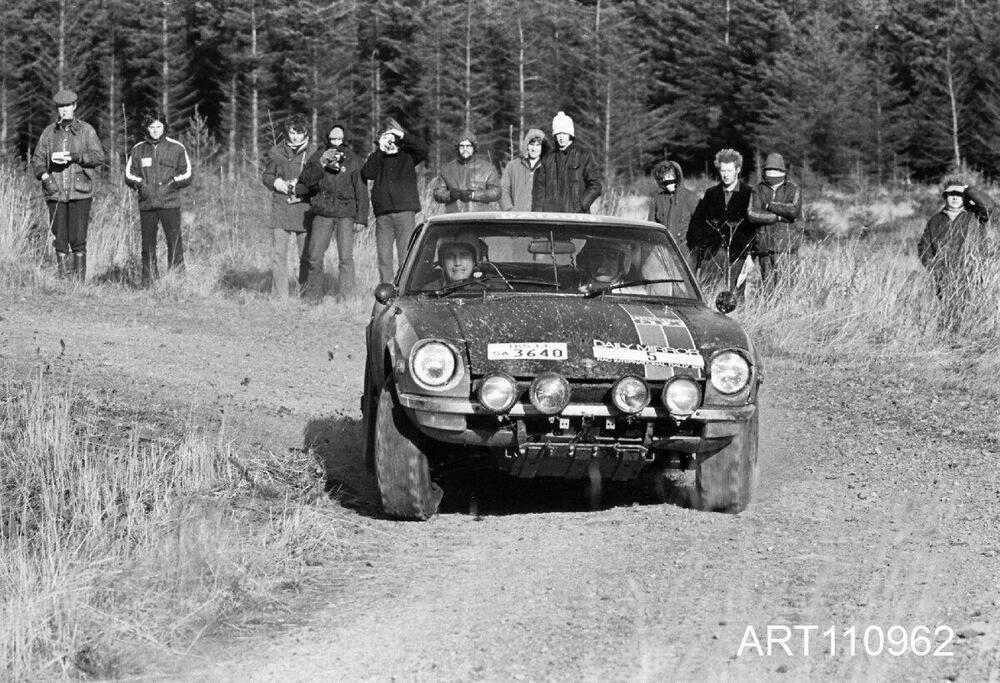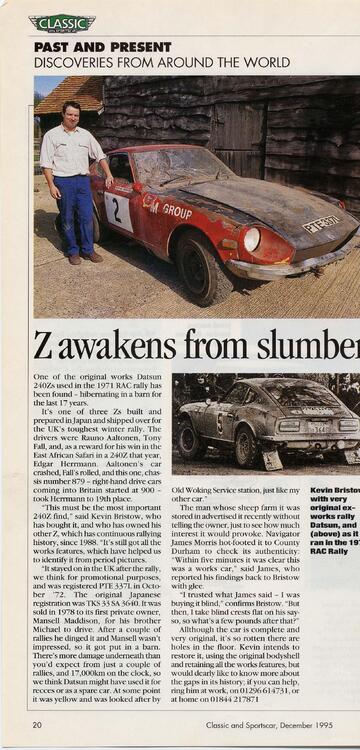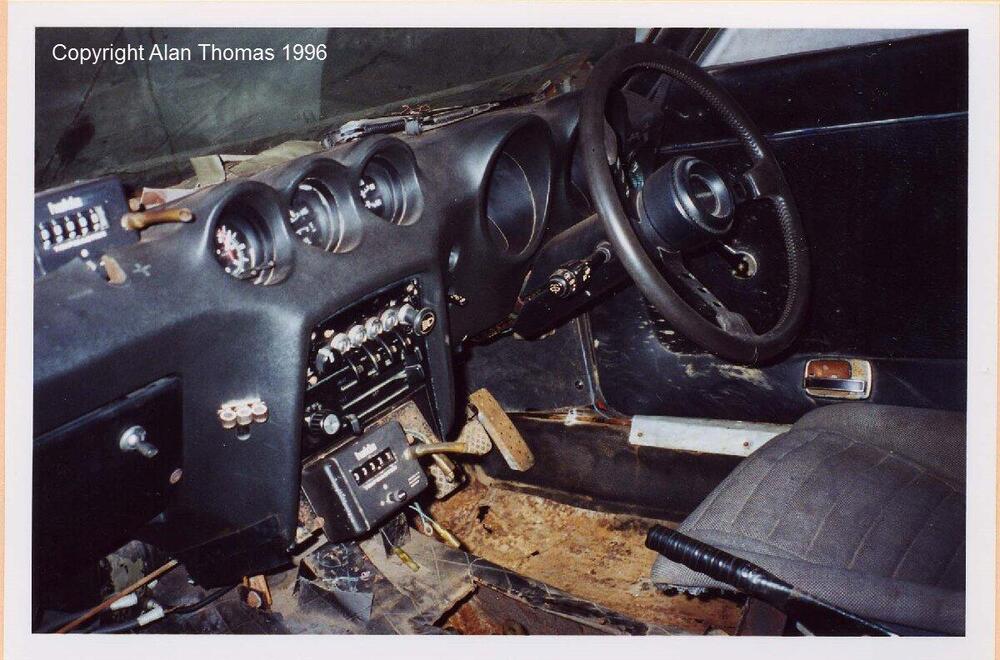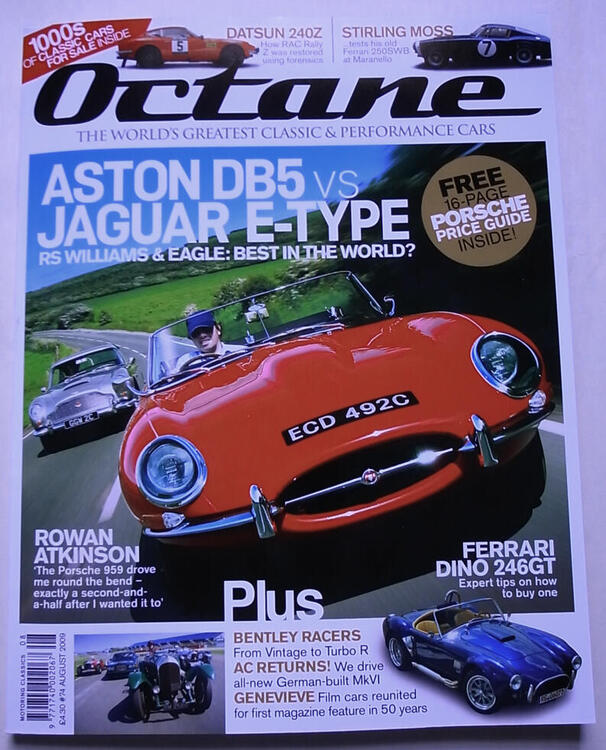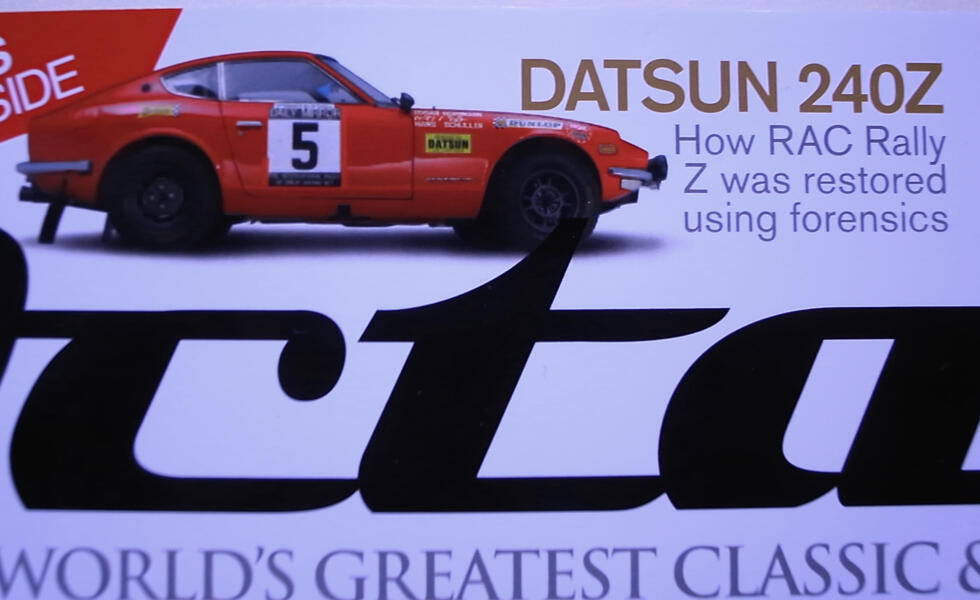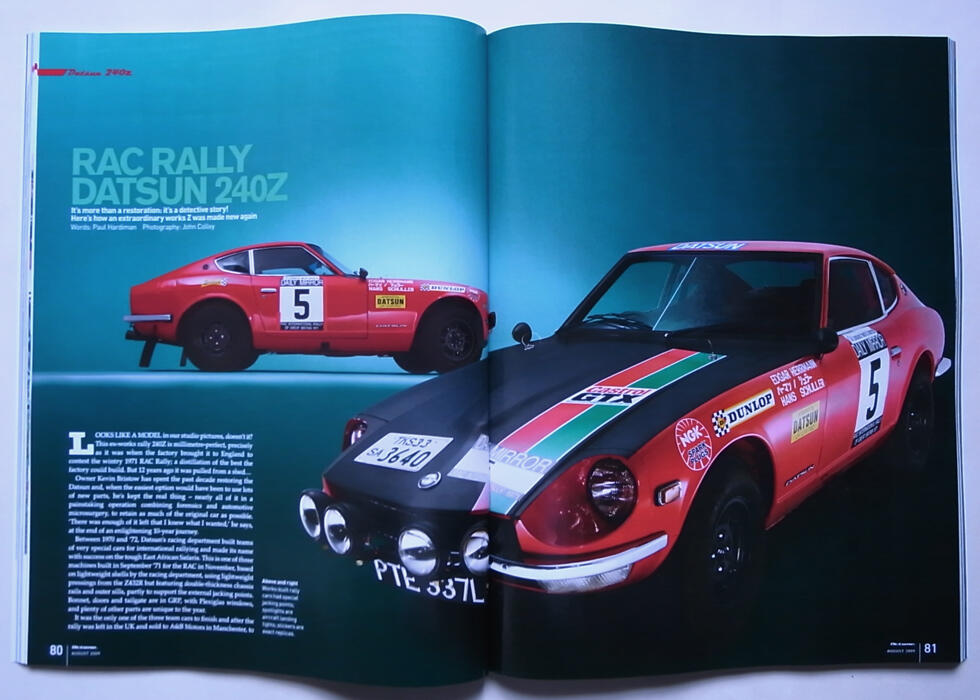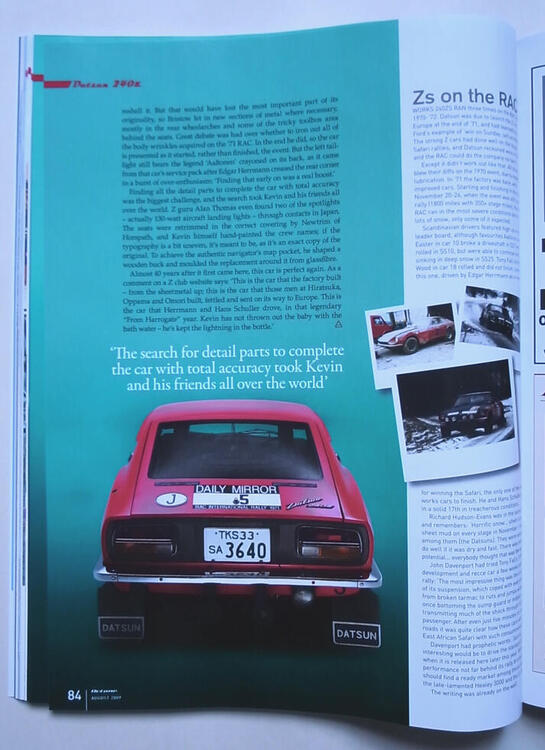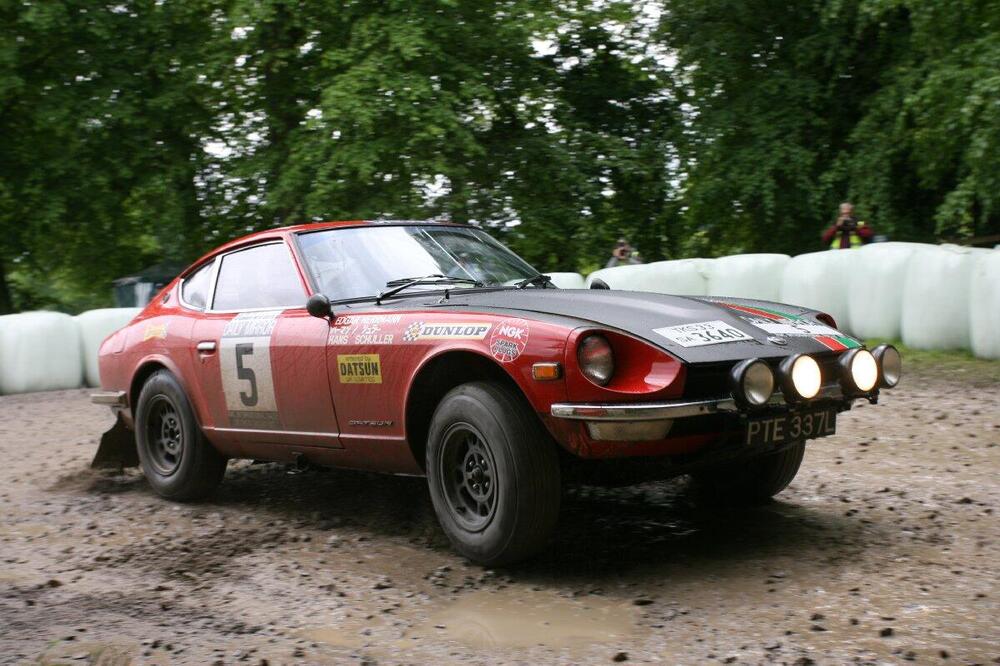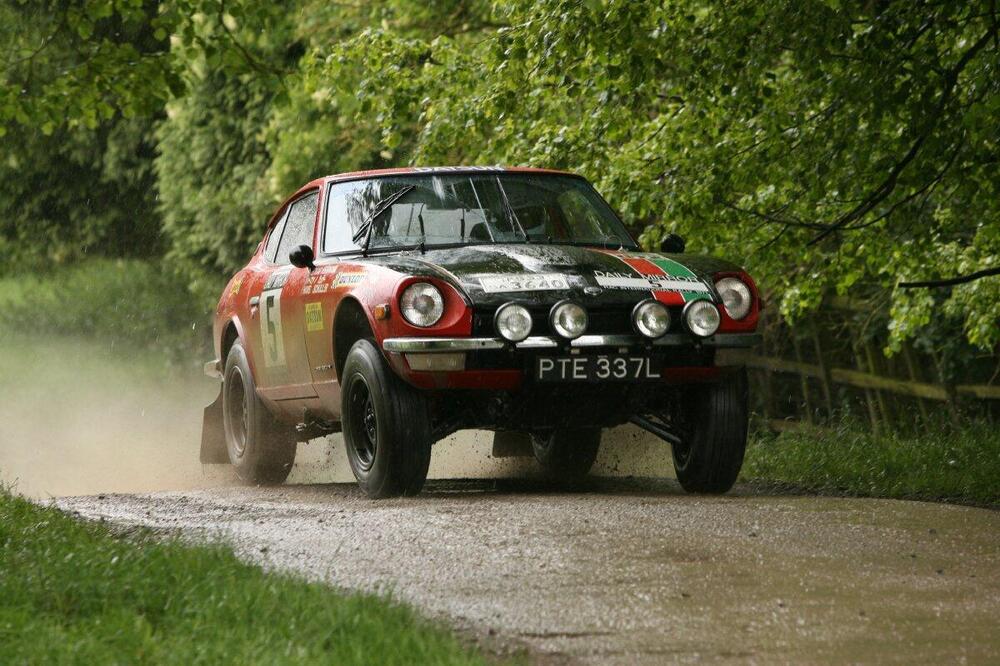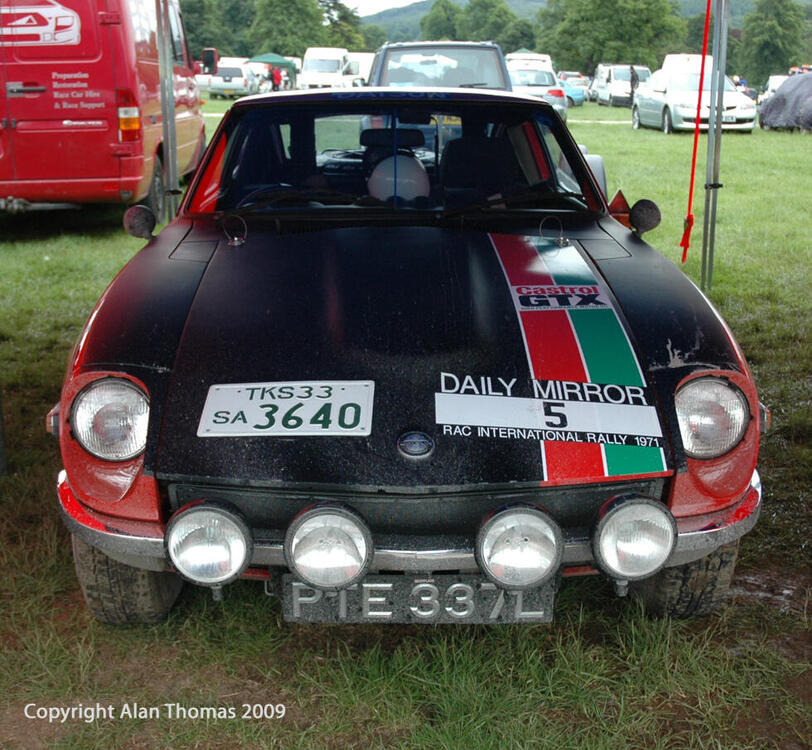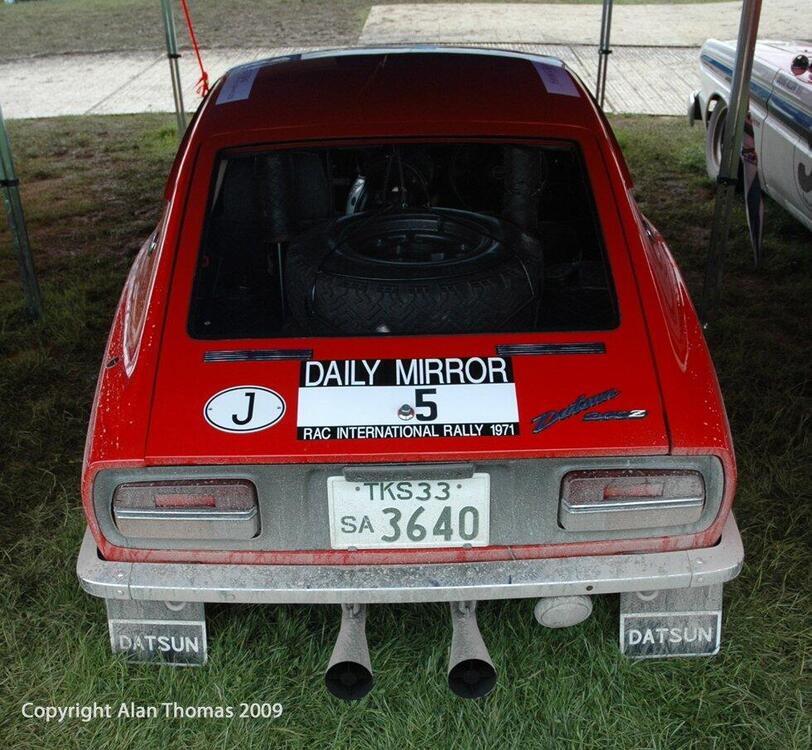Everything posted by HS30-H
-
'69 through '73 Steering Wheels - Wood, or Plastic?
Hi Kats. I remember having a similar conversation with Matsuo san, but I have also seen a period (early/mid-1970s?) Japanese magazine article which covered Izumi and their factory. Kind of a tie-up with their aftermarket wheel advertising. It would have been in Motor Fan, Motor, Driver or one of the similar Japanese monthlies and weeklies. I will see if I can find it again. Yes, Izumi used similar techniques to make the 'wood' steering wheels of 510 Bluebirds, C10-series Skylines and several other models, as well as the vinyl/'leather' covered versions. Their simulated-leather moulded vinyl wheels - complete with faux hand stitching detail, as seen on the 'Datsun Compe' wheels - are also rather clever. Izumi. An interesting company using technology to volume produce products that gave an Italianate 'hand made' feel. It makes me sad to see their fine work dismissed simply as 'plastic'.
-
'69 through '73 Steering Wheels - Wood, or Plastic?
Here's a question. Straight, no spin. Just how much wood do you think is in the rims of these wheels? What percentage of wood, what percentage of "plastic"? What proportions. Ballpark will do. You'll be guessing, of course. So ballpark is OK. I'm looking at the pieces I've chipped off the wheel, and whatever "plastic" is mixed in there is pretty scarce. Most of it seems to be confined to the outer surfaces. I can sand through the shiny stuff and get to the underlying layers of (what I'm calling) wood fibre, and that wood fibre reacts differently than the shiny stuff does. It sands like wood. I splits like wood. It splinters like wood. To all intents and purposes it behaves like wood. The majority component of the wheel rim is wood. In composite form, yes. Of course. I've been pointing that out for years. But wood nonetheless.
-
'69 through '73 Steering Wheels - Wood, or Plastic?
So when the guy on the latest Bring A Trailer 240Z auction refuted my explanation, then doubled down with "Steering wheels on Z's are plastic", you think it would be petty to correct him? That's what I keep seeing. Almost every time these wheels are discussed you see someone - or more - calling them "plastic". It is clear that they think there is no real wood in there at all. Put a few facts in front of them - including the wood composite explanation - and they wriggle with "...yeah, but it's still got plastic in it" or similar. I'm pushing back on that. Thanks. Next time somebody says "Steering wheels on Z's (sic) are plastic", you'll hopefully step up to the plate and introduce them to the pioneering 19th century WPC work of Michel Thonet, John Henry Belter and Isaac Cole as well as Mr Armin Elmendorf and his 1960s OSB patent. Or you could just sit back and let me shout "they are WOOD!" at them...
-
'69 through '73 Steering Wheels - Wood, or Plastic?
The people calling them "plastic" - I'd wager - haven't seen one taken apart as in the above photos. They call them plastic because everyone else does. As far as they are concerned, there is no wood in there at all. They are wrong. The only difference here is (your qualification of) "solid" wood. The Izumi wheel is wood attached to a metal frame. The part that people are calling 'plastic' is actually wood. Real, as in organic,wood. Look at the photos closely. That's not wood dust, wood pulp or wood shavings (as in MDF, for example), that is clearly grained wood. It splits with the grain. Split hairs too much here and you'll find somebody (maybe even me) telling you that your definition of "shaped pieces of solid wood" might also qualify as 'plastic' if they have been stained and lacquered...
-
'69 through '73 Steering Wheels - Wood, or Plastic?
I've been prompted to start a new thread on this subject after reading - for what seems like the thousandth time - somebody describing the OEM steering wheel on a late 1970 production HLS30UV as "Plastic". No. The OEM steering wheel on the '1969 through 1973 production S30-series Z was WOOD. Real wood. They were manufactured for Nissan by specialist Izumi Motor Co. Ltd, based in Shinagawa, Tokyo. Izumi made a wide range of steering wheels for Nissan, as well as selling their own aftermarket 'sports' stering wheels with a cheeky 'Izumi' engraved script which aped Nardi, one of their inspirations. Izumi used a patented high-pressure heat moulding process. Real wood fibres, impregnated with resin, were laid - following the grain - in a heated mould around the steel hoop of the steering wheel. High pressure, combined with that heat, moulded the wood permanently around the hoop and cured the resin. The result was a wood steering wheel, complete with finger grips on the rear, with no joints or seams. No splinters. My theory is that people found them a little 'plasticky' or just couldn't believe they were real wood, and it stuck. After 50+ years it is hard to shake this off, hence me reading a comment on yet another Bring-a-Trailer auction from somebody who is convinced they are plastic. Evidence: I've cut one up. I'm making a 'special' wheel using this 1970 production Izumi as a base (it was already damaged, so don't weep...) and can therefore show what's under the surface. I'll let the photos speak for themselves...
-
Does anyone recogniZe this emblem? Was it for 3x victory 280zx? in 1979,80,81 safarirally? I think NOT!
Nissan's East African Safari Rally 'Triple Crown' of overall wins usually refers to the consecutive wins of 1979, 1980 and 1981. Shekhar Mehta won all three driving Nissan PA10 Violets. The three cars now reside in the Nissan Heritage Collection at Zama. Nissan first won the event outright in 1970, with Edgar Herrmann and Hans Schuller driving a PA510 Bluebird. Herrmann and Schuller won again in 1971 in an HS30 Datsun 240Z. Nissan won again in 1973, with Shekhar Mehta driving an HLS30 Datsun 240Z, so the Z has won the event twice. Winning the Safari Rally was always a big deal for Nissan, and they celebrated their success with many stickers, posters, t-shirts and grille emblems. There are lots of repro stickers on the market these days, some of which take a little too much artistic license, some of which are plain absurd. There's a company making grille badges which takes this absurdity to extremes, mixing the 240Z/260Z/280Z with Martini stripes and the Targa Florio race. A bogus and bizarre combo: What?
-
- just got my '72.
Nissan's S20 engine was nothing to do with Yamaha. It had Prince lineage. The Fairlady Z 432 was a Nissan. There was no 'Datsun Fairlady 432'.
-
Z's on BAT and other places collection
Instances of people feeling the need to coin the term "Series 1.5" only serve to demonstrate what a confected nonsense the whole "Series 1", "Series 2" thing is. The Series is S30.
-
Z's on BAT and other places collection
Not sure how this didn't happen, single car scenario backs up your "$150k+ for the cars they restore" premise, but whatever. Some time ago (prior to Covid...) I was invited to become - in some way(?) - connected to the 'S30 World' operation. No idea what a singularly unpopular character such as myself was expected to add, but there you go. I declined. Looks like I made the right decision.
-
Z's on BAT and other places collection
My impression was that he's restoring cars for his own collection. How do you know they are going to be sold?
-
Let's show vintage racing pictures. I'll start.
This is the front row of the supporting bill GTS class race at the Japan GP meeting on May 4th 1971 at Fuji Speedway. Car No.16 is Kenji Tohira (240ZR), No.24 is Kunimitsu Takahashi (240Z), No.25 is Yoshichika Kiyoma (Z432-R) and No.23 is Haruhito Yanagida (Z432-R). The race was won by Kenji Tohira in his SCCN-entered Fairlady 240ZR, the only Works car in the race.
-
1970 240Z Works Rally - the road to restoration
I think the pattern was that Safari cars had 240 km/h speedos, probably because some pretty high sustained speeds were possible on certain sections and the was no legal speed limit. Monte and RAC cars would tend to see lower sustained stage speeds, and would have to conform to local speed limits on the road sections which linked the special stages. Yes, an accurate speedo would be of use to the driver when being required to maintain a certain speed on the road sections, but the navigator had the Haldas and Heuers to help with that too. It was the navigator's job to make sure that they checked in - and out - of time controls, service points and Parc Ferme on time. Navigator is the boss!
-
1970 240Z Works Rally - the road to restoration
Yes, that's Tony Fall and Mike Wood on a typical Forestry Commission track special stage of the 1971 Fram Castrol International Welsh Rally, in 'TKS 33 SA 696' - the Works team car that John Bloxham had used on the 1970 RAC Rally five months previously - which had been loaned by the Works team and was serviced by Old Woking Service Station. They won outright! This was the second international rally win for the 240Z, following Herrmann & Schuller's win on the East African Safari Rally in April.
-
My two swiss S30Z Fairlady Restoration build thread
I think they are made by Nishi san at 'Revive Jalopy' in Saitama, Japan.
-
1970 240Z Works Rally - the road to restoration
Not wishing to divert attention from 'TKS 33 SA 986', but to give a little extra context on the Works cars and a similar case of a Lazarus-like revival, please let me add a post to tell the tale of 'TKS 33 SA 3640'. I hope it will encourage @xs10shlin his task and help drive him along his road to restoration. 'TKS 33 SA 3640' was one of a batch of four RHD lightweight HS30 Datsun 240Z rally cars built up by the Works team at Oppama during the third quarter of 1971, for the express purpose of taking part in the 1971 RAC Rally here in the UK in late November. It was driven on the event by German-born Kenyan national Edgar Herrmann and his German co-driver/navigator Hans Schuller who had won the East African Safari Rally in their lightweight HS30 Datsun 240Z 'TKS 33 SA 1223' in April. That Safari win gave them a high seeding and a start number of '5', which would be something of an advantage on a forest type rally. But Herrmann - famously - had never rallied on snow before, and it was something of a certainty on the RAC. In fact, unusually heavy snow caused so much disruption on the event that a high number of special stages were cancelled/annulled halfway through and service crews struggled to make rendezvous with their team cars. There was a high rate of attrition. Herrmann/Schuller finished, but were classified 17th overall and 5th in the Group 4 class. Team members Rauno Aaltonen and Tony Fall were both non-finishers, but Shekhar Mehta - driving one of the previous year's RAC cars - finished 19th overall and 6th in Group 4. Privateer Rob Janssen - driving ex-'TKS 33 SA 986', now registered on Dutch plates '67-54-RU' and the subject of this thread - also retired. After the RAC 'TKS 33 SA 3640' stayed in the UK and was used for promotional duties by Datsun UK. Eventually it was sold to a Datsun dealership and was used on various UK rally events during the following years. It changed hands a couple of times, but eventually ended up in storage on a farm in the far north east of England. It stayed there - narrowly escaping a fire at one point - until bought by my dear friend Kevin Bristow in 1996. Decrepit, somewhat rusty (to say the least...) but largely complete, intact and authentic. Kevin started a long and slow process of research, parts (re)acquisition and restoration. I had the pleasure of being a small part in all of that. To cut a long story short, Kevin finished the car in 2008. Twelve years! The result is stunning. It was featured in the August 2009 edition of OCTANE Magazine with studio shots and a great write-up by Paul Hardiman (see attached). Kevin also took it to the 2009 Chatsworth Rally Show in Derbyshire, and demonstrated the car on the short Special Stage in the grounds of Chatsworth House. I got the honour of pretending to be the navigator (or Self Loading Freight perhaps...) whilst Kevin didn't hold back. The car got wet and muddy, as it was built to do. Fully alive again. '3640' on the 1971 RAC Rally: Classic & Sport Car Magazine 'as found' report: Post-restoration OCTANE Magazine feature: "Forensics". Pretty much, yes: And in action at the 2009 Chatsworth Rally Show: I hope the above is an inspiration and encouragement to @xs10shlin his journey to restore and refurbish 'TKS 33 SA 986'.
-
1970 240Z Works Rally - the road to restoration
This question starts out with a somewhat false premise. According to Nissan, a 'PZR' is very specifically a PS30-SB model Fairlady Z432-R. The Works rally car we are discussing here is a hybrid HLS30-prefixed 'Datsun 240Z' which utilised many of the PZR-specific thinner-gauge body pressings, ancillary parts and Nissan Race/Sports Option lightweight components. The terminology is tricky. We are trying to describe what are effectively PZR bodies, but with L-gata engines and HS30 and HLS30 chassis numbers. I have sympathy with @xs10shl because he is clearly using the 'PZR' term in an attempt to get across the specific and really very special nature of the early 'Lightweight' bodied Works rally cars. I myself find it difficult to get across to people the true nature of these beasts and how different they were from the '72-up 'Full Fat' Works cars (I sometimes call these 'Steel and Glass' cars, as opposed to the '70 and '71 'FRP and Acrylic' cars). The truth is that these early Works cars existed in a rather interesting grey area where the manufacturer was - shall we say - bending the rules somewhat. The cars were running in international events sanctioned by the FIA and were supposed to be conforming to the production-based Group 3 and Group 4 regulations according to the FIA 3023 homologation papers. But PZRs were Group 5 'Prototype' cars (due to their low build quantity), so the early lightweight Works 240Z rally cars were running with what could be seen as 'Prototype' class bodyshells in a Production-based championship. A competing team could easily have accused them of cheating, if they had known. PZR build quantities? Good luck with that. Nissan have always been vague about it, for good reason. We know how many roadgoing PZRs they sold - we even know their chassis numbers - but how many Works competition PZRs did they build for their own use? Some of them didn't even have chassis numbers. And what do you do about counting a factory PZR race car that has had an L24R engine put into it and the chassis tag altered to suit? You end up dancing on the head of a pin. We can't expect to be furnished with the full story, or even expect that such a thing exists. And that - for me at least - is part of the fascination.
-
1970 240Z Works Rally - the road to restoration
May I? Here's an excerpt from an original contact sheet of photos taken by Neill Bruce at Old Woking Service Station here in England, prior to the 1971 RAC Rally. I purchased all Neill's Works rally-related negatives and he signed the copyright over to me. Rob Janssen brought the car over from Holland in November and had Old Woking Service Station prep it for the event. They added a thick rubber fuel tank shield to give some extra protection and also a pair of rudimentary silencers to the original Works twin exhaust in an effort to cut down on noise. Not for the general public or the event scrutineers, but for the occupants... Also visible in the photos: The rear garnish cut-arounds for the quick-change rear lamp units, the mudflaps, the 100 litre tank, the auxiliary reversing lamp, the Dutch registration/license plate and - most importantly of all from a provenance perspective - the factory 'Kanri'/maintenance code number '8D-424' on the bottom RH side of the rear valance.
-
1970 240Z Works Rally - the road to restoration
The silver vertical is only one part of the heated screen system. There are zig-zagging horizontal elements embedded in the glass (just like a modern heated 'screen) which cover at least 90% of the glass. They are very effective.
-
1970 240Z Works Rally - the road to restoration
No takers yet? Don't want to spoil the fun, but I'd be in my element (ahem...) if I tried to answer. 😉
-
1970 240Z Works Rally - the road to restoration
No, it wasn't. Marcel Roks tried to get involved as a broker, but the car was bought direct from the owner in the Netherlands. I've known of the car since around 2005 and in 2006 I travelled to Holland to inspect and authenticate it at the invitation of the then-owner.
-
1970 240Z Works Rally - the road to restoration
Thank you @xs10shl for starting this thread. It is something of a relief after the mild social media hubbub following its appearance at the ZONC 50th Anniversary meet. Seems a few people got a not-unpleasant surprise. Not many people knew the car still existed. My inbox got very busy! "Is it The Real Thing?" was a frequent question... Yes, it is very much The Real Thing. This is an important car. Important to us as S30-series Z enthusiasts, important to Nissan/Datsun history and important within the history of the rallying world and the International Championship Of Makes (predecessor to the World Rally Championship For Manufacturers, which began in 1973). Nissan built a surprising number of these cars, but very few survive. Off the top of my head I can only think of SIX genuine Works 240Z rally cars that are still known to exist as complete entities, along with TWO ex-Works rally bodyshells converted to circuit race cars. Three of the former are owned by Nissan themselves and two are here in the UK. And this car is the earliest known surviving Works 240Z rally car. It also has the bonus of being an example of the 'Lightweight' body type (incorporating many of the thinner-gauge sheetmetal pressings used on the 'PZR' Fairlady Z432-R) and the Works team built it with fibreglass hood, tailgate and doors to offset the weight of the extra equipment a top line rally car needed. Drilling down into the details you could fill a book. Make no mistake, these cars were very special indeed and almost every part is custom or modified in some way over stock. They were hand built by a relatively small team of specialists at Nissan's Oppama-based competition department in small batches, each batch dedicated to one main event: RAC Rally, Monte Carlo Rallye and East African Safari Rally being the main three and the Safari being Target Number One. So each batch was different and the specifications of the cars and parts used evolved in steps as upgrades whilst also needing to comply with new regulations. Because of this evolution it is dangerous to generalise and say "the Works rally cars had...". Probably better to point at a batch, or talk about the cars on a case-by-case basis. For me, that makes them all the more fascinating.
-
1970 240Z Works Rally - the road to restoration
I can save you the trouble of looking. There's nothing in the FIA 3023 fiche which covers the handbrake or console.
-
1970 240Z Works Rally - the road to restoration
If you're referring to the LH-switched handbrake lever, it only* identifies it as an LHD Works rally Z. Not necessary on RHD ones. *'only' doing a lot of heavy lifting in this context...
-
Z's on BAT and other places collection
Here's a UK Z Club forum thread which gives a peep past the smoke and mirrors involved in TV shows of this nature: https://zclub.net/community/index.php?threads/salvage-hunters-classic-cars-280z.29319/ Presenter Drew Pritchard is something of a running joke over here, and this 'Salvage Hunters Classic Cars' series is a spin-off from his antiques & collectables-based 'Salvage Hunters' shows. He usually doesn't have the first clue what he's talking about, makes some inexplicable decisions (like the totally unnecessary metal 280Z emblem manufacture) and the cars often turn out to be All Fur Coat And No Knickers...
-
Datsun-240z Vs Fairlady-z432
I think that would be appropriate if the context suited, but definitely a niche interest. And - as is often the case with Works parts - something of a moving target in terms of evolution. Which version to replicate? There's also a philosophical conflict between original parts and replica/re-popped parts when the originals were never sold to the general public in the first place. Can be something of a minefield. I'm still not sure what I think about all that...








